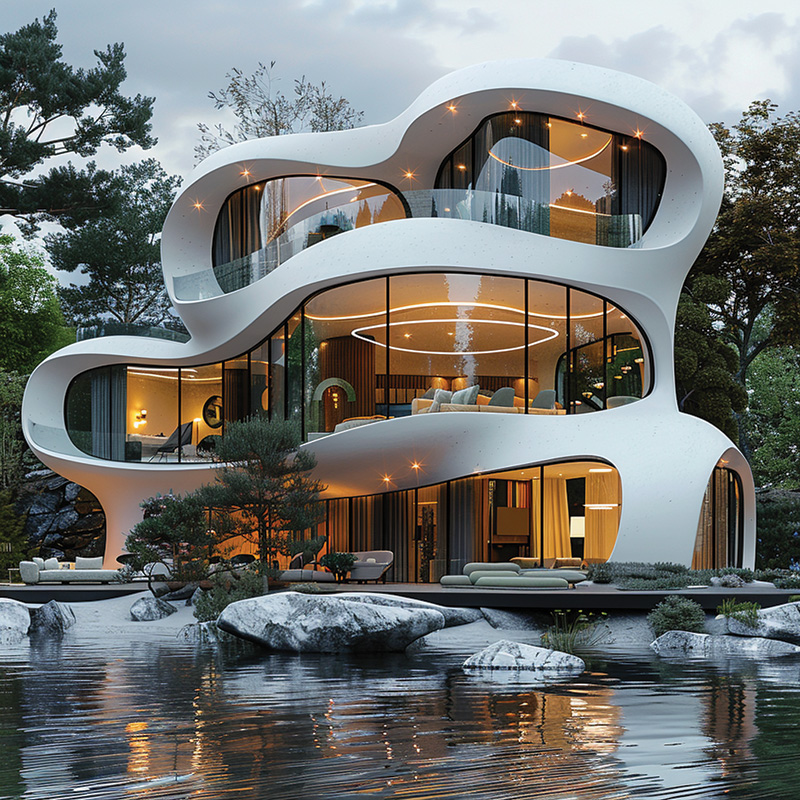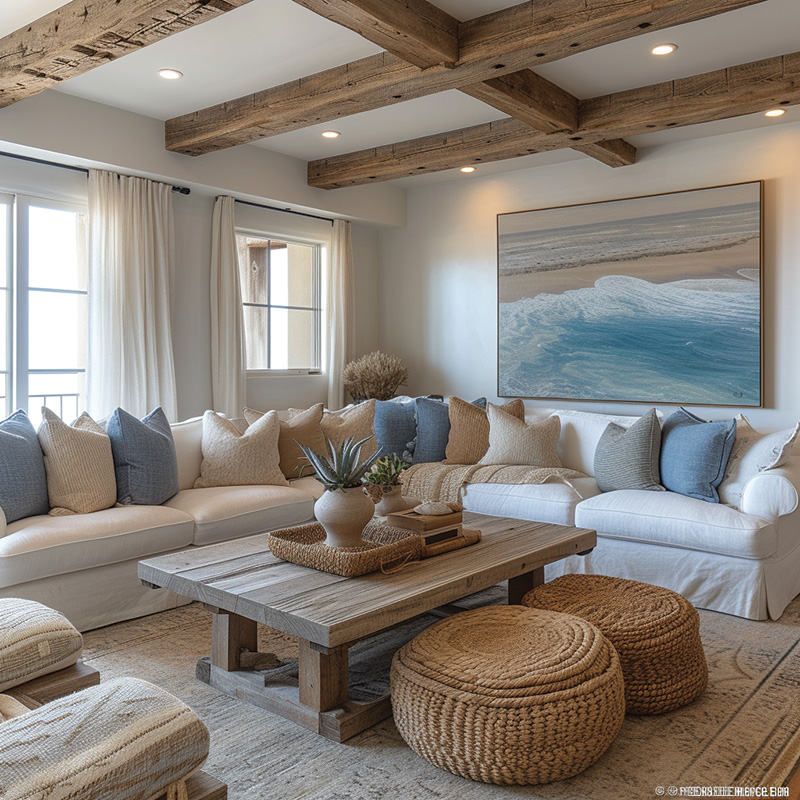The last couple of years has seen a huge uptake in the use of artificially intelligent interior design software by homeowners undertaking DIY projects and interior designers. What does all this mean for designers and the visual artists whose works are often used for inspiration or in renders? Grace Ellen Macpherson reports.
Artificial Intelligence (AI) interior design software has been rapidly developing over the last two years. Most developers have the interior design professional in mind as their primary user but as these programs are open to the public, other users including homeowners doing DIY projects, as well as realtors, developers and marketers, are using them too.
Interior designers are noticing its proliferation in their working lives, with many beginning to wonder what it means for their profession and industry at large.
Interior designer Fiona Lynch says her studio is “experimenting” with different AI programs, such as Midjourney, and describes it as a “great tool.” She said she has been encouraging her staff to upskill in AI, so they are prepared for the future, saying it could become an expected skill to have in an interior design studio.
The downside for the industry however, is the loss of what Lynch describes as “the lower end of the market.” This includes single residential projects, for instance, such as DIY homeowners redoing their kitchen. In her opinion, this would likely affect young designers the most, taking away certain entry-level jobs that allow them to break into the industry.
Artist and denHolm founder Steven John Clark has similar concerns, saying certain roles are likely to be drastically changed by AI. Rather than producing the ideas, certain roles may change and become more about the curation of AI-generated ideas, he said. “Renderers, graphic designers, roles like that, you are not going to need their wealth of knowledge, because you are just going to be able to use these tools. They are not going to disappear, but the number of them is going to definitely dwindle.”
There are two types of AI interior design software currently on the market: stable diffusion and generative AI.
/ The way I’ve been putting it lately, is that [AI design software] is a glorified Pinterest. / Jenna Gaidusek
Programs such as Home Visualizer AI, RoomsGPT, VizualizeAI and Spacely AI use stable diffusion, which produces photorealistic images from image prompts, and sometimes text prompts.
According to Jenna Gaidusek, a virtual interior designer and eDesign educator, “stable diffusion is basically taking an image and then changing that one image. While it can take text prompts to make an image, it is typically used to take either a line drawing, photo or inspirational image and change the look of it while maintaining the overall appearance of the image.
“It uses fine-grained control over the image generation process. Generative text models do not have that kind of control at this time.” Generative AI programs such as Midjourney, DALL-E, and Firefly, produce entirely new images based on text prompts alone.“ Generative text to image prompting is creating new iterations every single time,” Gaidusek said. “It’s not the same as stable diffusion, it is just giving you ‘idea’ images.”
Despite the differences, she says, all AI interior design software is used at the initial concept phase of the design process and therefore cannot mimic the entire interior design process. For homeowners Gaidusek says, “The way I’ve been putting it lately, is that [AI design software] is a glorified Pinterest”.
As the executive director of Home Visualizer AI, Kasey Hayano, explains, “it is really about conceptual renderings, visualising, and getting an idea around what the room could look like.”
AI software allows designers to generate initial concept images for their clients, instead of having to manually search for images, which is far more time consuming. Hayano says, AI is an “idea buddy” and interior designers are still needed to bring those ideas into reality, “and that means actually getting measurements, actually knowing what materials to go source for, and digging into their network of the right vendors to work with.”
For Gaidusek’s own design process, she said she stops using AI interior design software when she begins sourcing for her clients.
As it becomes easier to access AI software for interior design purposes, the issues of transparency and ethics are becoming more pressing. Across the world, legislation is either non-existent or behind the rapidly developing technology, which means individuals are currently left to their own ethical compass. In 2019, Australia provided a voluntary set of AI Ethics Principles, but of course these are not enforceable.
For many artists, copyright is their greatest concern when it comes to how AI programs are trained, and for some it is also a matter of safeguarding creative control and instinct.
/ [AI software] is really about conceptual renderings, visualising, and getting an idea around what the room could look like. / Kasey Hayano
/ As it becomes easier to access AI software for interior design purposes, the issues of transparency and ethics are becoming more pressing. /
“AI is getting so advanced now, for instance with generative fill in Photoshop, it is always giving you suggestions,” says visual artist Alan Jones. “It seems to be a case of ‘just let AI do it for you’, and as an artist I want to be in control. “I spent a week doing a series of 15 drawings [for a proposal]…but it felt like I was having to work against the grain just to do my own drawing…to not to take the suggestions AI gives.”
In terms of copyright, the concern is that images of artworks are being used to train generative AI programs, where AI uses it as “inspiration” for the images it produces. If people are going to do this, a system needs to be put in place to ensure they are getting formal permission from the artist, says Sophie Vander, founder and director of Curatorial+Co in Sydney.
“Interior designers have always borrowed our artists’ works to place into inspiration boards. I don’t have a problem with that as long as the artist is credited, because more times than not they will come back, and the client loves it, and they will end up buying the work.”
Ceramic artist, Alexandra Standen, says she has no issue with interior designers using AI, but said she would like to see it used transparently. “I think of AI in terms of when photography was created and everyone thought it was the death of painting, but actually it just became another medium.
“Or even 3D printing…similarly it is just another medium with a different dimension and different qualities. I think if used transparently AI could be a really interesting tool.” she said.
Above: AI-generated, tropical vacation home interior created with Midjourney.

AI-generated, bohemian-modern dining room created with Midjourney.

AI-generated, futuristic exterior elevation of a home created with Midjourney.

AI-generated, California-casual, coastal-inspired living room created with Midjourney.

